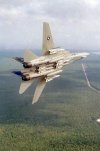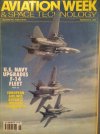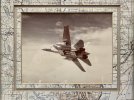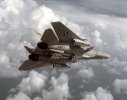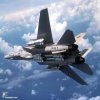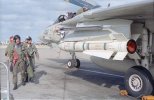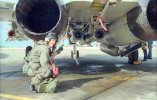Max the Mad Russian
Hands off Ukraine! Feet too
he late VADM Art Cebrowski (appropriately acknowledged by Max) developed tactics to introduce extremely long range intercepts with “Chainsaw” tactics and defense of a wide Arc using Vector Logic and semi-independent Tomcats managing their own parts of the Grid for hours on end.
When being realized, that had ruined all previous tactics and led to a creation of RUGs (Badgers/Backfires mix ) and decoys, with some missiles are to launch unguided before the main salvo to engage at least some Tomcats prior to real deal. It may seem strange, but Intel always insisted that F-14 is unable to land on a carrier with all six Phoenixes and four is its max practical load. So we never counted on six per aircraft, and oppositely, while Backfire could carry up to three Kh-22s, one in a bomb bay and two underwings, only single slug inside was actual load to utilize all aircraft's benefits.
I was far more worried about taking out the Charlie Class Sub lurking about before it could launch its load prior to getting tapped itself.
Ok, Backfires had indeed nothing but M>2 dash and group salvo as a main tactic but about 1984 it came to a concept of combined attack: the whole PAD aka anti-carrier sub division (NOT administrative unit but operational one: 8 Oskars, 1-2 Victors/Akulas, 1-2 Sierras) should shadow the CBG in three groups, with 4 Oskar-IIs being within launching range and rest 4 ones dispersed leeward to cut the CBG retreat off (or react to another CBG), but first hand was given Victors/Sierras group, which is first to kill SBG's LA-class (or two) then engage surface escort, first of all Tico-class to soften the AAW, all with torpedoes. And Backfires should make their dash approach and launch all missiles within one minute slot just five minutes before the more deadly SS-N-19s from those 4 Oscars approached the outer defence ring of CBG. If properly done, this co-ordinated attack may be quite devastating. But... Trying to do so, all the subs of the PAD should be at the 'scope depth with satellite antennas up. Suicide mission if S-3s and P-3s loaded, cocked and battle ready. That is why the Russian staffs were like "wait, what???" when USN resharped VS people almost entirely to air refueling and whole VP went to rather survelliance jobs instead of ASW.
Last edited:

